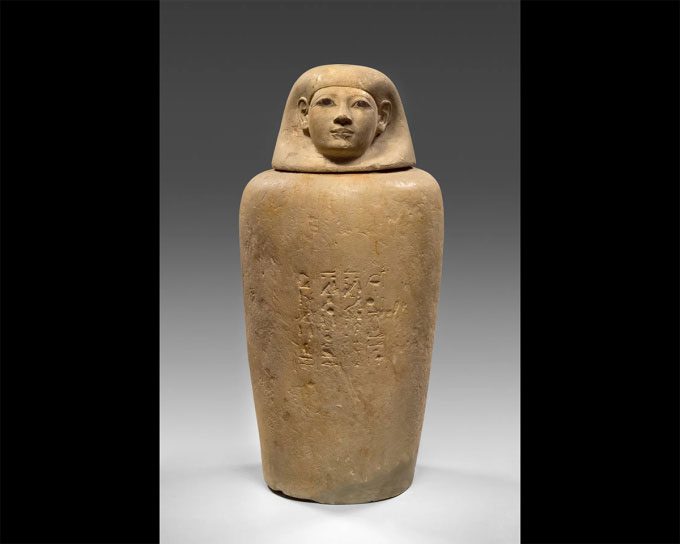The components of the embalming solution for an ancient noblewoman showcase the intricate mummification techniques of Ancient Egypt.
A team of scientists led by archaeologists from the Max Planck Institute (Germany) has completed a comprehensive analysis of the perfumes or embalming solutions used in the mummification of an ancient Egyptian woman, as reported by Ancient Origins on August 31. According to the research team, the components of this solution indicate that the woman held a very high status.

One of the limestone jars containing the mummy of Senetnay. (Photo: Christian Tepper/August Kestner Museum)
This ancient noblewoman was named Senetnay. The legendary Egyptologist Howard Carter discovered her mummy in 1900, in a tomb near present-day Luxor. She lived around 1450 BC during the 18th Dynasty of the New Kingdom of Egypt. Senetnay was the wet nurse of Pharaoh Amenhotep II during his childhood.
Upon Senetnay’s death, her organs were embalmed and placed in four jars, which were stored inside a royal tomb in the Valley of the Kings, a site frequently used for burying pharaohs and nobles of the New Kingdom.
In the recent study published in the journal Scientific Reports, experts collected six samples of perfume from two jars that contained Senetnay’s liver and lungs. Although these jars had been cleaned long ago, they were still able to scrape small samples of dried perfume from within them. These samples were chemically analyzed to determine their composition.
The results showed that the perfume samples from each jar contained similar natural components including: beeswax, animal fats, vegetable oils, bitumen from petroleum, pine resin, and resins from other coniferous trees. The scientists also found traces of the chemical compound coumarin (which can be extracted from tonka beans and cinnamon) and benzoic acid (found in the resin of many plants).
In addition to these common substances, the research team discovered two specific compounds used exclusively in the jar containing the lungs. The first was larixol, extracted from the resin of larch trees. The second was not clearly identified, but scientists believe it to be a fragrant resin known as dammar, sourced from trees in India and Southeast Asia, or another resin extracted from cashew trees.
This discovery suggests that the ancient Egyptians utilized specialized embalming substances for different organs. They invested significant research into the science of embalming to an unprecedented degree in human history.
Previous studies on embalming solutions in Ancient Egypt suggested that most used a mixture of relatively simple components, all derived from local plants. However, the perfume used to preserve Senetnay’s organs was different. It comprised many more components, indicating a more complex preparation process, and even included many ingredients imported from outside Egypt, making them rare and expensive. The perfume made from these substances would have been reserved for those of high status. It is likely that they also had higher quality, helping to preserve the organs longer than simpler mixtures.


















































